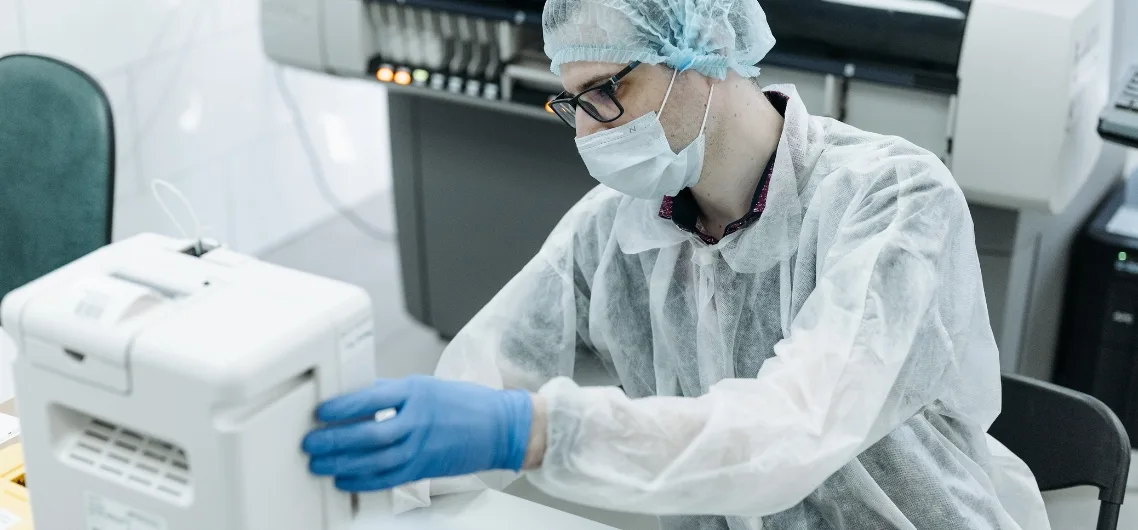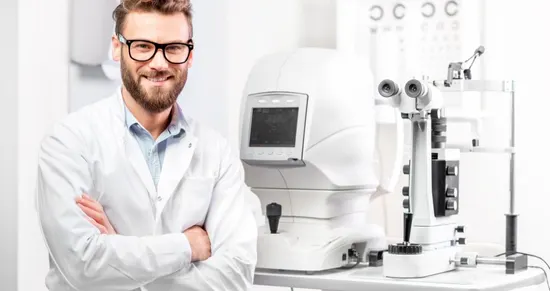Introduction
Post-Market Surveillance Plans (PMSPs) are the mechanisms that allow manufacturers to tap into this real-world feedback. They are the proactive strategies designed to keep a watchful eye on products after launch, ensuring they continue to meet safety and performance expectations. To meet safety standards and legal obligations, manufacturers must actively monitor their devices once they’re in use.
Maven helps medical device manufacturers address these critical requirements through structured, standards-based support systems. From ISO guidelines to EU MDR expectations, Maven helps ensure compliance and patient safety.
What is Post-Market Surveillance?
Post-market surveillance is a crucial framework established by manufacturers to proactively monitor and evaluate the safety, performance, and effectiveness of their products after they have been placed on the market. It involves gathering, analyzing, and acting on data to identify risks during the product’s usage.
Unlike pre-market testing, post-market surveillance of medical devices provides real-world data that highlights potential problems not captured during clinical trials.
Why is Post-Market Surveillance Essential?
Before getting into the components of a post-market surveillance plan, it’s important to understand why this process matters. From safeguarding patients to satisfying legal mandates, the purpose of PMS goes beyond just compliance.
Ongoing Safety and Performance Monitoring
Once a device is in regular use, performance may differ across users or environments. A proper post-marketing surveillance system captures that diversity, helping to detect issues early and reduce harm.
Regulatory Compliance
Regulations like EU MDR post-market surveillance requirements and ISO 13485 post-market surveillance requirements demand that manufacturers conduct ongoing surveillance. Authorities require documented systems to ensure that any risks are addressed promptly.
Lifecycle Management
Devices can evolve, just like software or hardware updates. PMS allows for adjustments based on how the product performs in real-world settings, feeding back into the device’s design and use instructions.
Key Aspects of a PMSP
A well-structured post-market surveillance plan should include clearly defined procedures, responsibilities, and goals. Let’s check the main components of a functional PMSP.
Data Collection
Data sources include customer feedback, complaints, adverse event reports, and published literature. With tools like incident databases and user surveys, post-market surveillance MDR systems can gather meaningful insights from real-life usage.
Data Analysis
Once data is collected, it must be assessed for trends, frequency, and severity. This helps identify risks and performance deviations. According to a 2018 FDA study, over 1.7 million injuries and more than 83,000 deaths were linked to medical devices, highlighting the critical importance of post-market surveillance.
Action Triggers
Thresholds must be defined to indicate when corrective or preventive action is required. For example, a spike in similar complaint types may trigger an investigation or design change.
Communication
Effective Post-Market Surveillance (PMS) includes clear lines of communication with healthcare providers, distributors, Authorised Representative, and Notified Bodies or Authorities. All stakeholders must be informed promptly, whether it’s an alert or an updated manual.
Continuous Improvement
Insights gathered from PMS feed into ongoing product enhancements and future device designs. This aligns with the goal of continuous innovation and compliance.
Post-Market Surveillance and ISO 13485
ISO 13485 is the globally recognized standard for quality management systems in the medical device sector. It places significant emphasis on post-market surveillance.
PMS and ISO 13485 Relationship
Clause 8 of ISO 13485 details how manufacturers must monitor product performance and maintain feedback systems. It mandates structured surveillance activities that are directly linked to risk management. Rather than reacting to issues, ISO 13485 encourages proactive approaches to quality. This includes analyzing trends before they harm and strengthening your post-market surveillance report framework.
Post-Market Surveillance Plan (PMSP) and EU MDR
The EU MDR post-market surveillance framework has introduced more stringent surveillance expectations compared to the previous MDD.
Regulatory Requirements for PMSP
EU MDR Article 83-86 defines surveillance requirements. Manufacturers must create a PMSP as part of their technical documentation. For Class IIa, IIb, and III devices, additional reporting, like a periodic safety update report (PSUR), is mandatory.
Post-Market Clinical Follow-Up (PMCF)
A specific part of PMS, post-market clinical follow-up, gathers long-term clinical evidence on device safety and effectiveness. It ensures that devices continue to perform as intended throughout their lifetime.
Examples of PMSP Elements
A compliant PMSP, as outlined in 21 CFR 822.10, includes several essential elements that ensure medical devices remain safe and effective after market launch. Below are key components to include:
1. Objectives
Define surveillance goals and questions to guide post-marketing surveillance efforts.
2. Methodology
Describe the study design, including hypotheses and success criteria, to support structured monitoring.
3. Study Population
Detail the target patient group, inclusion/exclusion criteria, and demographic diversity to ensure relevant data collection.
4. Variables & Endpoints
List primary/secondary endpoints, define adverse events, and include a plan to assess event-device relationships, critical for post-market clinical follow-up.
5. Sample Size
Include a statistically justified sample size aligned with study goals.
6. Data Sources
Identify sources like hospital records or registries, with rationale for their relevance and reliability in post-market surveillance medical device monitoring.
7. Data Collection Plan
Explain procedures for data gathering, management, and quality control.
8. Documentation
Provide forms, informed consent, and IRB approval/exemption documents where required.
9. Follow-Up Plan
Outline patient follow-up timelines, retention strategies, and assessment checkpoints to support post-market surveillance MDR and IVDR post-market surveillance.
10. Data Analysis
Include planned statistical methods and how results will be used for regulatory decisions or device improvement.
Maven helps ensure that every PMSP element meets EU MDR post-market surveillance and ISO 13485 post-market surveillance requirements, supporting safe, compliant, high-performing medical devices.
Post-Market Clinical Follow-up (PMCF) / Post-Market Performance Follow-up (PMPF)
While PMCF applies to general medical devices, PMPF is relevant under post-market surveillance IVDR for in vitro diagnostic devices. Both involve planned clinical or performance studies that continue post-launch.
Periodic Safety Update Report (PSUR)
PSURs are summarised reports of PMS findings. They include results from post-market surveillance MDR activities and risk-benefit assessments.
Vigilance System
The Medical Device Vigilance System reduces the risk of repeated device-related incidents by reporting and assessing adverse events. Through National Competent Authority Reports (NCARs), necessary field safety actions are triggered.
EU guidelines support consistent reporting by manufacturers and authorities, with most incidents requiring notification within 15 days.
Benefits of a PMSP
Beyond compliance, a solid post-market surveillance plan can bring long-term value and improvement to a medical device company.
Improved Safety
Early detection of risks can save lives. The quicker a device fault is identified, the less likely it is to cause harm.
Enhanced Performance
By understanding how the device performs in real use, manufacturers can enhance device instructions, training, or materials for better results.
Regulatory Compliance
Meeting MDR post-market surveillance and ISO 13485 post-market surveillance requirements helps avoid penalties and product recalls, which can be both reputational and financial burdens.
Product Improvement
Feedback from users and clinical performance studies can lead to innovations or upgraded product versions, helping companies stand out in the market.
Challenges in Implementing an Effective PMSP
While the benefits are clear, building and maintaining a PMSP comes with real-world challenges.
Data Privacy and Security Concerns
Handling sensitive health data means abiding by laws like the General Data Protection Regulation (GDPR). Manufacturers must ensure encryption, access control, and secure storage of surveillance data.
Resource Limitations
Smaller companies often struggle with limited manpower or tools for comprehensive post-market surveillance. Outsourcing to compliance partners like Maven helps bridge that gap.
Regulatory Complexity
Complying with global standards, IVDR post-market surveillance, EU MDR, FDA and others can be complex and challenging. Each region may have different expectations and documentation needs.
Timely Action
Even with the right data, delays in decision-making or internal processes can reduce the effectiveness of the PMS system.
Technology and Tools for Effective Post-Market Surveillance
Modern technology helps simplify and enhance post-market surveillance medical device activities:
- AI-driven trend analysis detects anomalies in feedback data.
- Cloud-based platforms centralize complaint tracking and documentation.
- Digital reporting systems reduce human error and increase audit readiness.
Manufacturers can reduce manual workload and ensure real-time monitoring by automating certain processes.
Conclusion
Post-market surveillance goes beyond compliance; it plays a vital role in ensuring patient safety and maintaining product quality. With evolving regulations like EU MDR post-market surveillance requirements and IVDR post-market surveillance, a structured approach is essential.
Maven empowers manufacturers to meet these expectations confidently, offering support across data collection, documentation, and reporting. Companies can build compliant and safer devices with the right tools, strategy, and expertise.
References
1. What GAO Found
2. ISO 13485 Clause 8: Measurement, Analysis, and Improvement
3. ANNEX III
4. MDR – Article 86 – Periodic safety update report
5. MDCG 2020-7
6. Market surveillance and vigilance






